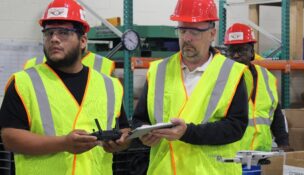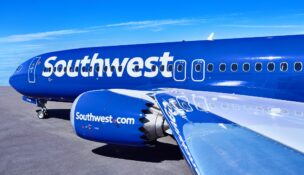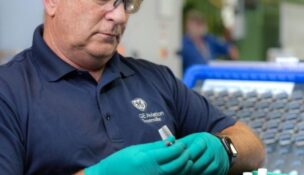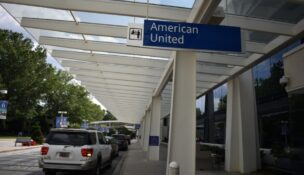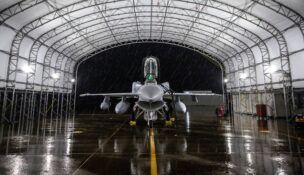GSP capital projects soar despite pandemic turbulence
Molly Hulsey //November 4, 2020//
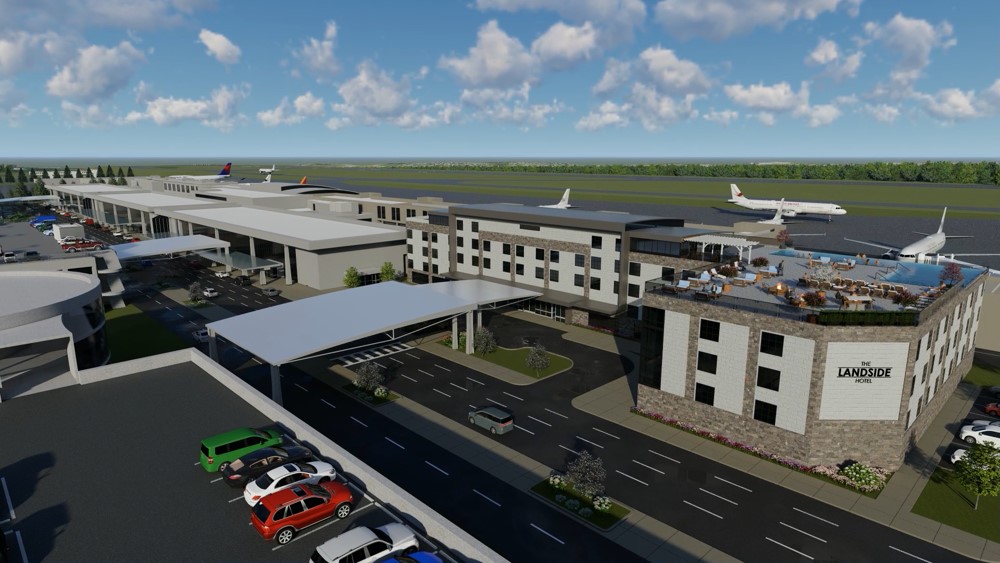 Greenville-Spartanburg International Airport is still down by about 35%, but that’s not stopping the Upstate transit hub from charging ahead with capital projects.
Greenville-Spartanburg International Airport is still down by about 35%, but that’s not stopping the Upstate transit hub from charging ahead with capital projects.
“We still have a second runway plan for the future, we have lots of new cargo buildings, an apron, terminal expansions and other support facilities that are planned during this period — roughly half a billion plus in development over the 20-year timeframe,” Dave Edwards, president and CEO of GSP, said during a recent presentation to Upstate SC Alliance. “Which is about $750 million, with roughly $200 million of that still potentially happening in the next five to seven years, so we still believe we’ll be pretty busy here at GSP with development.”
Public and employee parking lots, started before the pandemic, are set to reach completion by the end of the year. Turning the clock back to the end of February, Edwards reported that the airport was “essentially out of parking.”
Greenville-based Mavin Construction gave the airport’s 1962-era aircraft rescue and firefighting facility a facelift and then some during the pandemic. The ribbon on the new $9 million, 24,000-square-foot facility will be cut in November — a month ahead of pre-pandemic projections.
Three times larger than the original building, the station will hold an expanded apparatus bay for fire equipment and administrative offices, training and workout rooms, as well as larger living quarters for on-duty firefighters, according to a news release.
A 1,500-space parking garage is also waiting in the wings with 750 spaces designated for public parking and 750 for a rental car return hub, followed by plans for a hotel at the north end of the terminal, built around the need for beds before an early-morning flight or business meeting.
“This is our vision, not necessarily a hoteliers’ vision at this point,” he said, gesturing to a three-story stone structure complete with a rooftop pool and pergola overlooking the runway. The airport has not yet connected with a hotel developer on the project but wanted to construct a rendering to see how the structure would fit into the 20-year master plan, approved in February by the Federal Aviation Administration.
As in airports across the country, the pandemic ripped a significant hole in GSP’s projected budget, but alternative revenue sources, such as a growing cargo business, and $26 million in Coronavirus Aid Relief and Economic Security funding, has continued to clear the runway for future capital projects.
 “Most airports rely on revenue that’s generated from passengers … but you can also see that GSP, we have three other pillars that we operate on in lines of business,” he said. “That’s cargo; commercial fueling, general and corporate aviation; and land development. And if you look at that as a total of our operation budget, they represent 20% to 22% of our annual revenue stream, which has been very important to us.”
“Most airports rely on revenue that’s generated from passengers … but you can also see that GSP, we have three other pillars that we operate on in lines of business,” he said. “That’s cargo; commercial fueling, general and corporate aviation; and land development. And if you look at that as a total of our operation budget, they represent 20% to 22% of our annual revenue stream, which has been very important to us.”
While commercial fueling has suffered some due to landed passenger planes, other revenue streams have been doing “extremely well.”
“We make every attempt to limit leveraging ourselves with debt, so we try to do most of our projects in cash. So this cash flow is extremely important to GSP to continue to do various projects whether it’s in the terminal or in the airfield here at the airport,” he said.
In an effort to keep and attract additional airlines, GSP has even been able to lowers its costs per boarded passenger from $6.20 pre-pandemic to $5.50. Without CARES act funding, the cost would be about $9 per boarded passenger, he said.
That difference will help keep GSP competitive as it faces a 35% decline in revenue for the current fiscal year at $32 million — still rosier than the 23% decrease expected from last quarter projections following a 96% drop in air traffic in April.
The executives of Delta, United and other major airlines predict that domestic revenue is expected to right by 2024 or 2025, followed by international flights in 2025, according to Edwards.
“Dave has said that from the very beginning,” Spartanburg County Councilmember David Britt told GSA Business Report. GSP passenger numbers is one of the recovery metrics charted by Spartanburg’s Bringing Back the Burg Business Recovery Taskforce, co-chaired by Britt. Edwards is a member.
“Probably the last metric that will come back of our 19 (measurements) is air travel. … I think it mirrors what is going on across the country,” Britt said. “Not just at other airports that are similar in size to GSP, but Atlanta-Hartsfield, Chicago.”
This February saw more than 4,000 passengers a day, he said, which dropped down to about 290 in March.
“On the good side, and this is where the GSP leadership is to be commended, is cargo travel. They’ve been blowing it off the charts,” he said. “Dave’s team: they’ve gone out and convinced businesses and companies around the world: You don’t need to send your cargo through Atlanta or Charlotte; send it right here. And it’s working. Their numbers are way, way up, and they are knocking it out of the park.
This story originally appeared in the Nov. 2, 2020, print edition of the GSA Business Report.
P





